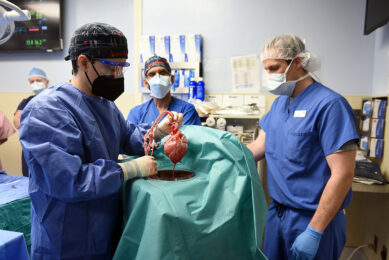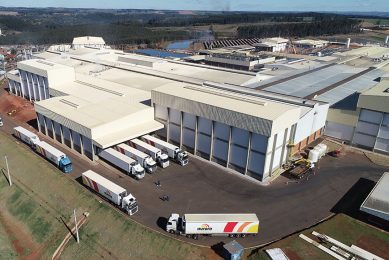Overstocked hospital pens
The idea of the hospital pen has caught on well. And that’s good. However, on the 30 or so large production units in five countries I have been invited to tour this spring and summer, by far the large majority – about 80% no less – were making one or both of these serious errors, at least in my opinion…
The idea of the hospital pen has caught on well. And that’s good. However, on the 30 or so large production units in five countries I have been invited to tour this spring and summer, by far the large majority – about 80% no less – were making one or both of these serious errors, at least in my opinion…
1. The hospital pens were nearly all in the main building(s).
2. They were overstocked (overcrowded) especially during an outbreak of disease. The reasons given for these errors were always: “We just haven’t enough space.”
Sure, I understand this, but what producers are failing to realise is the damage both errors are doing to productivity.
Breeding ground for infection
A hospital pen is a breeding ground for infection. You don’t need me to tell you that. It must be sited well away from the indigenous pigs This is especially important at the nursery stage of rearing.
Workers attending to the hospitalised pigs must wash their hands, change overalls and scrub, not just dip, their boots before moving back to the healthy pigs. This is part of modern-day management, just because after meddling or uncaring politicians, the cost of food and a low pig price – disease is our worst enemy!
Farmers who have adopted the ‘Streaming’ concept (see my Pig Production – What the Textbooks Don’t Tell You textbook, pps. 241-247) have realised what failure to keep diseased pigs well away from the healthy ones could cost them a 9% rise in operating costs (Gadd 1997) over the whole herd, due to the close proximity of the sickly pigs to the healthy ones.
Money
Overstocking costs money. Even among healthy pigs. With the help of several farmers I measured it carefully several years back. At 15% overstocking (for example, 14 pigs/pen instead of 12) then destocking by this amount, and allowing for 15% higher housing overheads, gave a 6:1 economic benefit (Gadd 2003). Even I was surprised!
If healthy pigs can respond to this extent what would unhealthy ones do? Their immune system is already weakened, challenged or acutely activated – this latter itself eats up food energy – and the stress of disturbance and close contact must delay recovery anyway. Please don’t overcrowd sickly pigs.
Okay – what about that perennial excuse of not having enough space? I meet it every where I go.
Let us discuss this next time – I’ve some ideas for you.
Join 18,000+ subscribers
Subscribe to our newsletter to stay updated about all the need-to-know content in the pigsector, three times a week. Beheer
Beheer










 WP Admin
WP Admin  Bewerk bericht
Bewerk bericht